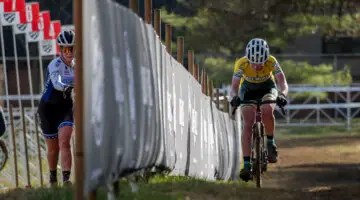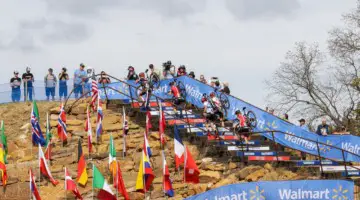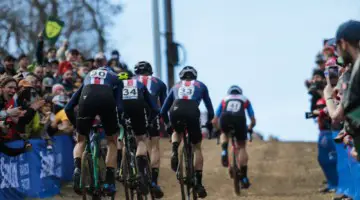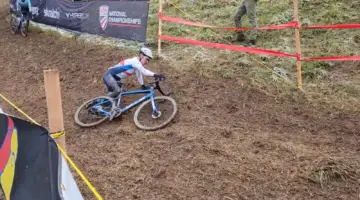A few weeks ago, USA Cycling held its annual Sport Committee meetings in Colorado Springs.
Included in the meetings was a “State of the USAC Union” presentation from outgoing president Derek Bouchard-Hall. Cyclocross representative Adam Myerson live-tweeted DBH’s presentation to give USAC license holders a look at where the organization currently is.
After reading Myerson’s tweets, we reached out to him for a deeper look at the state of USAC and his first year as a representative on the Cyclocross Committee. Our questions and his responses are below.
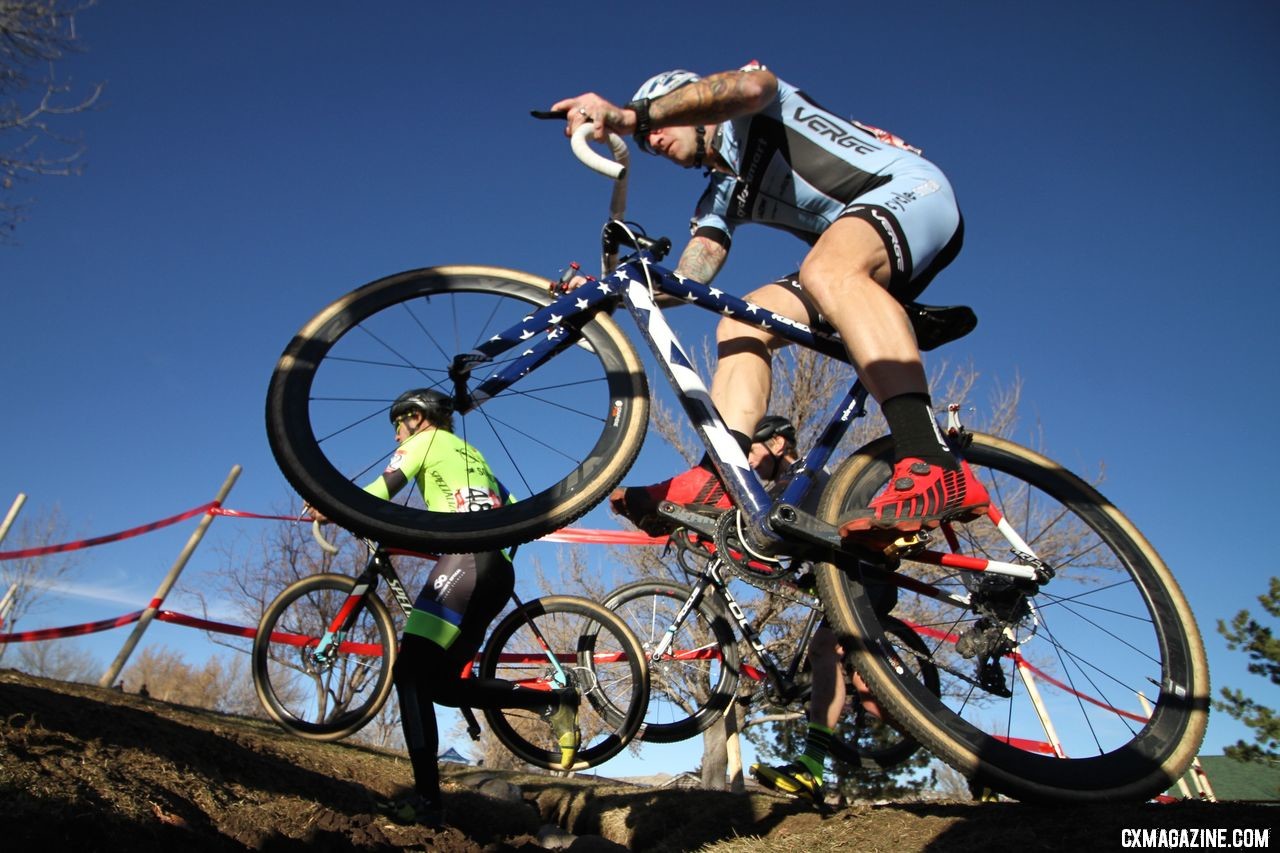
Adam Myerson hopped into a new role as USA Cycling Sport Committee member starting in 2017. Masters 45-49. 2018 Cyclocross National Championships. © D. Mable/ Cyclocross Magazine
Interview with Adam Myerson about the 2018 USA Cycling Sport Committee Meetings
Cyclocross Magazine: You live-tweeted the USAC Sport Committee meeting. What was your motivation behind offering us visibility into what was being discussed?
Adam Myerson: It’s my second Sport Committee meeting, and I believe I did the same thing last year. The opening presentation from DBH is essentially a State of the Union address, and it addresses many of the questions all members have, not just Sport Committee members. None of it is confidential, but it’s not all necessarily easily accessible. I also think it’s important to let the members know what work is being done on their behalf.
CXM: Beyond your tweets, will there be any public disclosure of meeting notes and data shared?
AM: The meetings aren’t really structured like that. I’m sure each individual Sport Committee could release their meeting minutes from the weekend, but every committee has its own working plan and goals. We do regroup at the end of the two days to present an overview of our work to all the other Sport Committees, so I suppose that could be made public if it was structured in a way to make it easy to distribute.
But there are some things that are specifically confidential for one reason or another, mostly because they’re just not fully baked plans or the data isn’t vetted yet. In summary, these are brainstorming sessions as much as anything else, so not really the kind of format you’d be able to easily present to the public in a meaningful way.
CXM: Your tweets point to declines in both racer days and unique racers over the last few years. Whenever we’ve asked for data from USAC, they’ve only shared racer days, even when we’ve asked for unique racer numbers. Can you share any insight into the unique racer numbers for cyclocross specifically, and how they’ve changed over the last 10 years?
AM: Not beyond what I tweeted, no. We weren’t given reports, just DBH’s overview presentation. If I understand your question, you’re saying USAC hasn’t provided you with the total number of licenses sold, and what discipline they’re sold to? I would ask again if that’s the case. I don’t have that handy, but that info is definitely available now. Perhaps it wasn’t as easy to access until the IT improvements were made, I’m not sure.
CXM: DBH is leaving. How would you grade the job he did while leading USAC?
AM: I still believe he is the most qualified person for the job, he was given an almost impossible task, and I’m grateful for the three years we had him. He made a huge amount of changes in his attempt to right the ship.
It’s reasonable for him to feel like he’s taken his pull and now it’s time for someone else to come through. I won’t pretend to not be disappointed about it, and I honestly have no idea who the new candidates will be, but they will be hard shoes to fill.
CXM: With a new president of USAC coming in, what, if anything, can cyclocross racers do to get USAC to invest more in cyclocross at the participation or pro level?
AM: Make sure when you renew your license you make cyclocross your primary discipline, first of all. That is crucial.
Then, if you’re someone with enough wealth to make donations to causes you’re passionate about, reach out to Tim Johnson and get involved with the USACDF, and see if you can put some of that money directly to cyclocross. Donor funding is a much bigger part of supporting both elite athletics and grassroots development than I previously understood.
As a non-Olympic sport, cyclocross’s problems will continue to be about funding. The current Cyclocross Committee is really good, and we are being given a lot of power to define the future of the sport at USAC. Without money, there’s only so much we can do. And we have to find that money ourselves because it’s not going to come from the USOC.
CXM: What is USAC doing well? What would you like to see it improve on?
AM: I think they’re doing a good job of listening and figuring out how to give the people what they want. It’s an impossible task to balance all the things that the membership wants from USAC because they are often competing and conflicting needs. I have and had a lot of faith in the current leadership, with DBH, Joan Hanscom, Randy Shafer, and Chuck Hodge. With Joan also leaving now, I am concerned, but I’m also very encouraged by Scott Schnitzspahn, the new VP of Elite Athletics, and his commitment to giving ’cross what it’s asking for and working with the committee.
I also think USAC has done a good job of bringing professionals in from outside of cycling, like Guillermo Rojas, the new director of marketing and communications. People who can see cycling from outside of it are in a good place to understand how we need to shape ourselves going forward.
I think USAC can do a much better job of recruitment and retainment of all future bike racers but especially racers outside of our current demographic. USAC has never had a recruitment program and always relied on clubs and organic popularity of the sport for membership. We can’t count on that anymore, and we can’t continue to rely on the population peak of 40+ men who came into the sport as juniors watching Greg LeMond or adults watching Lance to keep the sport popular. Catering to them means we’re at best ignoring and at worst shutting out recruiting and retaining new members outside of that group.
If we want growth, it has to come from women and people of color. USAC has to come up with a plan to make the sport appealing to them.
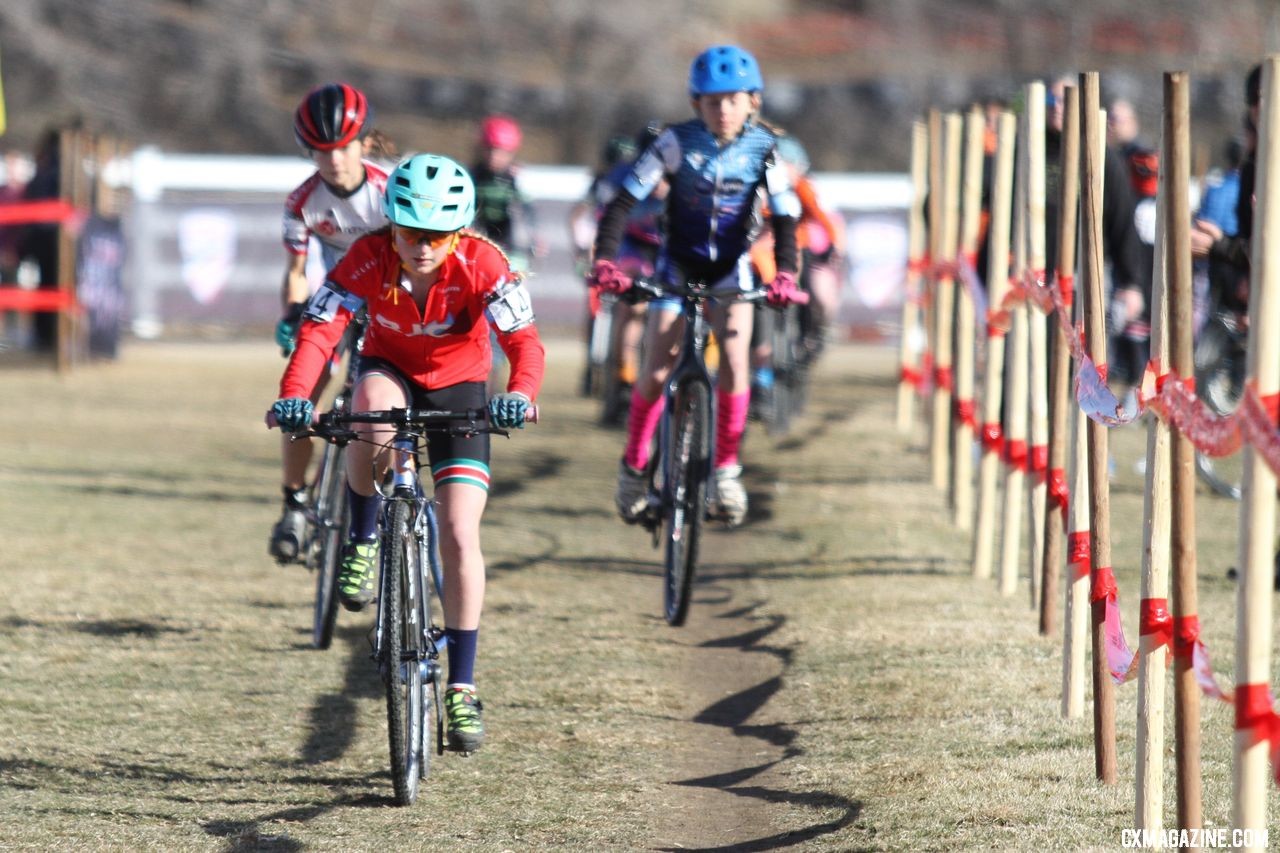
Myerson said finding new participants is essential to the future of cyclocross. Junior Women, 13-14. 2018 Cyclocross National Championships. © D. Mable/ Cyclocross Magazine
CXM: What have been the highs and lows of your role?
AM: It’s a surprising amount of work, honestly. A monthly conference call and yearly trip to Colorado Springs doesn’t sound like much, but it’s disruptive to everyone’s day jobs and family life, and we spent a lot of time working via email on the things we lay out on the monthly calls.
Our committee is the most active and most empowered, we’ve been told, and I think that’s because we have the most work to do. I think the high has been the change from past years where most of the good ideas and recommendations don’t make it past the Committee. There was a lot of frustration from returning Committee members when I first got there. The new group has been able to push past that and push USAC to give us staff hours and money to implement our recommendations. That feels good, but we’ll see if it turns into success.
CXM: What accomplishment are you most proud of since taking on this role?
AM: I would not describe them as my accomplishments, but as a committee, seeing Tim Johnson put in place as head of the USACDF is really good for ’cross, and he’s finding us money already. The committee itself has made inroads at the foundation and started to find ways to match donations and get them to pay attention to cyclocross.
We’ve pushed USAC for a cyclocross-dedicated staff member, and that’s in the works. If we get that position created and filled, we will finally have a single person who can answer to and speak for ’cross, instead of a part-time contractor whose main job is running development camps, Euro trips or Elite athletic programs. I can’t say more about that yet, but things are in the works and candidates identified. It will be huge for us if it comes to fruition.
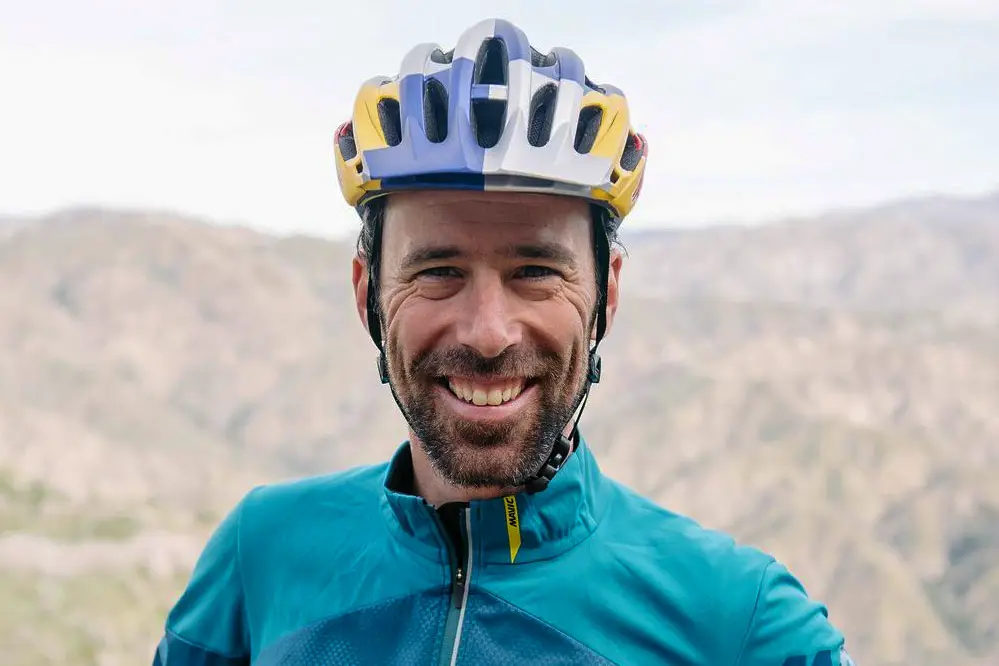
Tim Johnson continues his involvement with cycling as the Development Director for the USA Cycling Foundation. photo: Cannondale
CXM: Thanks for your time. Looking forward to what’s to come.
AM: Thank you.
Featured image: Jeff Curtes
























